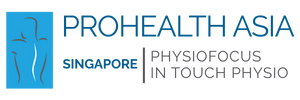Optimising Performance: Specialised Physiotherapy for Padel and Pickleball Athletes in Singapore
The athletic landscape of Singapore is rapidly embracing Padel and Pickleball. While these paddle sports offer fantastic fitness benefits, their unique demands - quick acceleration, sudden deceleration, and rotational force - create specific injury profiles that require expert management.
For players seeking to maintain peak performance and prevent sidelining injuries, specialised physiotherapy in Singapore is an essential part of their training regimen. This article focuses on the key areas where targeted physical therapy intervention makes the difference for Padel and Pickleball players.
Padel & Pickleball: The Biomechanical Demands
These two sports share a need for sharp lateral movement and excellent hand-eye coordination, but they stress different parts of the body:
Padel: Emphasises explosive power, rotation, and reaching overhead for smashes, placing high stress on the rotator cuff and lower back.
Pickleball: Relies heavily on repetitive, short-arc swings and wrist action (especially near the 'kitchen' line), making players highly susceptible to Tennis/Pickleball Elbow and wrist strains.
Targeted Physiotherapy Focus Areas
A sports physiotherapist understands the subtle differences between these sports and can deliver highly focused treatment and training.
1. Elbow and Wrist Load Management
The prevalence of Lateral Epicondylitis (Pickleball/Tennis Elbow) requires precise diagnosis. Physiotherapy treatment moves beyond temporary relief to address the root cause:
Grip Strength Assessment: Determining if grip size or excessive tension during the volley is contributing to tendon overload.
Kinetic Chain Analysis: Strengthening proximal structures (shoulder and scapula) to offload the forearm muscles.
Eccentric Training: Specific exercises to structurally strengthen the extensor tendons and increase their resilience against repetitive stress.
2. Enhancing Lateral Stability and Power
Both sports demand frequent, rapid changes in direction. Injuries like ankle sprains and calf strains are direct consequences of poor dynamic stability.
Proprioception Training: Using balance boards and single-leg drills to sharpen the nervous system's response to instability, significantly reducing sprain recurrence.
Gluteal and Hip Strengthening: Focusing on the gluteus medius and deep hip rotators is crucial for maintaining a strong base and preventing knee and back strain during the side shuffle and lunging shots.
3. Spinal Rotation and Core Resilience
The rotational element of hitting a forehand or a powerful Padel serve can lead to chronic lower back pain.
Thoracic Mobility: Improving flexibility in the upper and mid-back (thoracic spine) allows for cleaner rotation, transferring stress away from the vulnerable lumbar spine.
Anti-Rotation Core Work: Training the core to resist rotation (e.g., using Pallof presses) provides the necessary stability to control the explosive forces generated during a swing.
The Prevention Edge in Singapore
For the serious Padel or Pickleball player in Singapore, the value of physiotherapy lies in injury prevention. Regular screening and movement correction sessions with a qualified therapist can identify movement compensations before they manifest as pain.
By proactively addressing muscular imbalances and fine-tuning biomechanics, players can ensure their dedication to these exciting new sports is sustainable, keeping them competitive and injury-free on the Singapore courts.
Would you like to explore specific strength and conditioning exercises recommended by physiotherapists for Padel and Pickleball?

